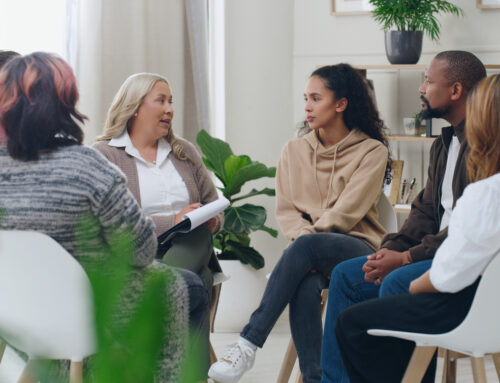(a chapter from Telling Ed No! by Cheryl Kerrigan©)
I was told early on that recovery is not a straight line, that it has ups and downs. Until I lived it, though, I did not realize how true that statement really was. You have to fall down in order to learn how to get back up.
I fell and needed help.
Despite my progress, Ed was in my way more than I wanted him to be at this point. My food choices were becoming less risky, and I frequently skipped meals and snacks. I felt scared and vulnerable. After talking with Rachel and the rest of my outpatient treatment team, we collectively agreed that I needed a more intensive approach to move forward. So I decided to re-enter inpatient treatment, and Bob made the arrangements for me to have another intake at Walden.
Admitting I needed more help was very hard because I felt embarrassed and humiliated. My first thought was that I had failed. How could I have let this happen? I had to remind myself that Ed is strong and hard work is necessary to fight him off. Falling down does not mean I failed; I just needed more weapons. After I thought about it, I realized asking for help shows strength, not weakness. I hoped and prayed that Walden would accept me back into the program.
After the intake, when they came back and told me I would be staying, a sense of relief came over me. I was happy that I would get the help I sought. Another risk had paid off, and I was thankful. Even though my condition was not as medically compromised as before, the 24-hour care would help me to break the cycle of negative behaviors and thoughts. I felt some initial embarrassment about being back there again, but being around the same staff as before calmed me down right away. Comfort and a sense of security set in, and soon we were all laughing and joking together. By treating and talking to me like a person rather than an eating disorder, they helped me push through those difficult emotions.
Still, Ed was trying to convince me that I didn’t have an eating disorder, and that I didn’t need anyone, only him. I fought those thoughts through positive self-talk. I told myself to be brave, and remembered Bob saying I should “trust the process.” I also told Ed to leave me alone.
At this point, my body checking was becoming more frequent. I was repeatedly using my hands to feel specific areas that I thought were getting bigger. I knew that wasn’t good and would hinder my progress, so I told Bob. We brainstormed and came up with suggestions for ways to decrease the behavior and lower my anxiety about it.
Because I could body check anywhere and at anytime, I needed to find many different tools to help me out in various scenarios. Here’s what we came up with: sitting on my hands, sitting certain ways that are comfortable, counting to fifty, journaling, putting an object in my hands, and speaking a positive mantra. I utilized any device that I could to stop the negative behavior. When I caught myself body checking, I used many of these techniques, which took practice. Sitting on my hands was the one I used most often, because I could do that anywhere, and it was effective.
Inpatient treatment provided me with new tools and experiences that made the ups and downs of my recovery begin to get easier. But where would recovery take me next, and am I ready for it?
REFLECTIONS
Body checking can become excessive when Ed is constantly telling you negative things about your body. Are you listening to him? What tools can you use to stop the body checking behavior? Could you write in your journal, hold a tangible object in your hands, play with silly putty, or sit on your hands? Brainstorm with others and list 3 ways to stop the behavior. Then put them into practice the next time you find yourself body checking.
With health, hope and strength,
Cheryl






